Hamiltonians often talk about how much they enjoy spending time in Europe, but we could have a European quality of urban life here as well.
By Nicholas Kevlahan
Published January 10, 2007
Last month the City of Hamilton sponsored a Hamilton Pedestrian Workshop as part of its efforts to rebalance our transportation network. Apparently, the City may finally be getting serious about properly balancing the interests of motorists, public transit and cyclists in accordance with Vision 2020 (the City's primary planning document).
This represents a radical change in the City's thinking. For the last 50 years transportation planning has had only one goal: to maximize speed and minimize cost for motorists. The needs of other road users were considered only secondarily, and only inasmuch as they didn't conflict with the first goal.
Rebalancing the transportation network of a large city is an ambitious goal. Some might say it is too late to do anything more than tinker around the edges (retiming traffic lights, or modifying signage). However, other cities are already aggressively shifting the balance in favour of public transport, cyclists and pedestrians.
In 2005 I spent three months in Grenoble (France), which is in the process of implementing just such a radical transformation.
Greater Grenoble is a city of 515,000 in southeast France not far from Italy and Switzerland. Some may remember it as the site of the 1968 Winter Olympics; it is also a major university town and high tech centre.
Although its origins date back to the Roman Empire, it was essentially a small garrison town until it experienced massive population growth starting in the 1960s. Because of this, much of the suburbs were developed in the 1970s and 1980s.
Grenoble is similar to Hamilton both in terms of its size, and also because of the large amount of recent suburban development. The climate is also relatively cold (at least for France!).
I hope that by showing what Grenoble has done, we in Hamilton will be a bit more ambitious. If they can do it there, we can certainly do it here!
Like Hamilton, Grenoble is ringed by freeways (the A41, A48, A49, and A51) and relatively low density suburban neighbourhoods. However, in 1987 Grenoble made a pioneering decision. They became the second city in France (after Nantes) to reintroduce streetcars (the old streetcars stopped running in 1952 and the tracks were ripped out).
Since then they have built three ultra-modern lines, and will soon complete two more (in 2007 and 2011). Figure 1 shows the three existing lines, with a total of 68 stations and 32 km of track.
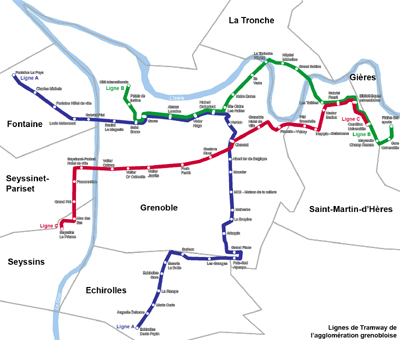
Figure 1: Grenoble's streetcar lines (Image Credit: Wikipedia)
The streetcars themselves are ultramodern, fully accessible, quiet and comfortable (see an example in figure 2). They pre-empt traffic lights, and have their own right of way outside the compact city centre.
Figure 3 shows how the streetcar stations fit beautifully into the downtown streetscape. Note the raised platforms and use of different materials in the track and platform areas. Figure 4 shows the streetcar's centre median right-of-way outside downtown.
I saw for myself how popular the streetcars are, especially with students going to and from the university (which is located in the suburb of St-Martin-d'Hères).
Besides dramatically improving the speed and quality of public transport, the streetcar has also been a catalyst for the revitalization of the neighbourhoods it passes through.
Not surprisingly, 11 French cities have now re-introduced streetcars, 4 are under construction and another 4 are in the planning stage. Clearly, streetcars are an idea whose time has come again! Grenoble is also considering re-introducing electric trolley buses (these disappeared from Hamilton streets in 1992!).
Bringing back the streetcars was a huge leap forward in re-balancing Grenoble's transport network, but the suburban municipalities are also re-designing their streets to improve conditions for pedestrians and cyclists. Hamilton could learn something here too!

Figure 2: a modern streetcar
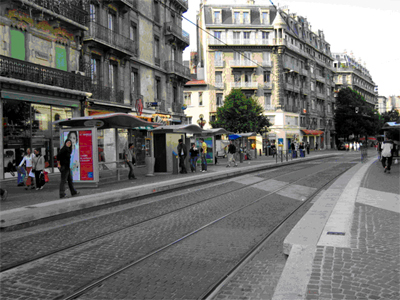
Figure 3: a streetcar station in downtown Grenoble
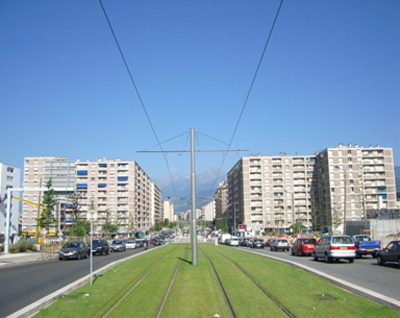
Figure 4 : suburban streetcar lines. Notice the grass growing between the rails: from a distance it looks just like a lawn! This could be Upper James (Image Credit: Wikipedia)
Bringing back the streetcar is a major infrastructure project, taking decades and millions of dollars to complete. The results are certainly worth it, but small-scale re-engineering of the streets themselves can also dramatically improve conditions for pedestrians and cyclists (as well as making the streets safer for motorists).
I have been impressed by the positive changes to the suburban streetscape since my first visits to Grenoble ten years ago.
During my recent visit to Grenoble I lived in the suburban municipality of Poisat (population 2139). Poisat used to be a tiny village on the outskirts of Grenoble, but since the 1970s it has been developed with new subdivisions (mostly single family houses and medium-rise apartment buildings).
In fact, Poisat resembles much of suburban Hamilton in terms of density and date of construction. Like Hamilton, the streets were designed with only the convenience of motorists in mind. In Poisat, at least, this is changing!
Before discussing some specific examples of re-engineered streets, I'd like to say something about road design in France. For many years France had the unenviable reputation as a very dangerous place to drive: deaths and injuries due to motor vehicle accidents were some of the highest in Europe (certainly much higher than Canada). Accidents were due mostly to speeding, drunk driving and poor road design.
However, a few years ago the French got serious about trying to reduce the carnage on the roads. They did this in two ways: enforcement (of speed limits and drunk driving laws), and redesign of streets (especially in urban areas).
These changes are already paying off. Between 2001 and 2005 there was a 36% drop in the number of people killed and a 30% drop in the number of people injured. These data are from the 2006 report Caractéristiques et causes des accidents de la route [PDF link], which contains a wealth of statistics and analysis of traffic accidents. One interesting observation from the report is that road accidents become less serious as cities become denser and traffic slows.
Let's look at what Poisat has been doing to re-engineer its streets.
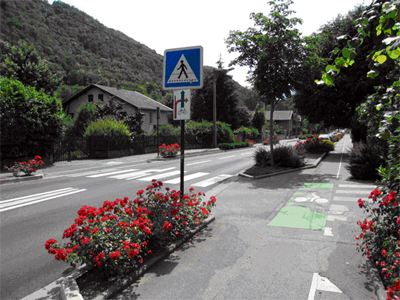
Figure 5: a multi-use street in Poisat
Figure 5 shows a Poisat street that was recently 're-balanced'. This road used to be a two-way four-lane street with narrow sidewalks on each side. It is now clear at a glance that this is a street where the needs of motorists, cyclists and pedestrians are respected equally.
Notice the following features:
The following figures show more examples of how the streets have been re-engineered.
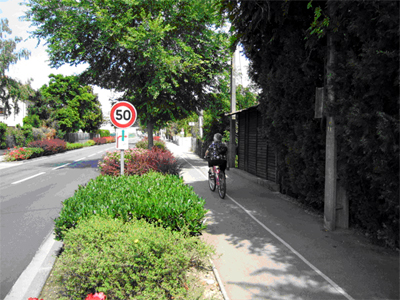
Figure 6: cycling isn't just for the young if the roads are safe!
Figure 7 shows how they deal with a cycle path crossing a road. The cycle path is clearly indicated by road markings, and speed humps and narrow lanes slow motorists down. You can also see parking bays on the left side of the street.
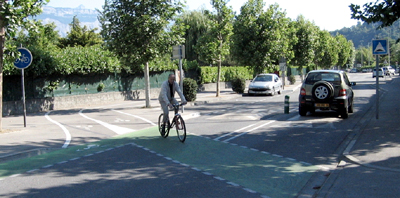
Figure 7: cycle path crossing and speed hump
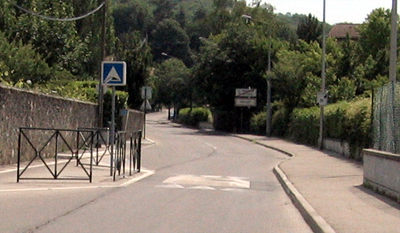
Figure 8: a chicane and speed hump. Oncoming traffic must yield
Figure 8 shows a traffic-calming feature that is increasingly common in France and the UK: the chicane. A two-way two-lane road is reduced to one-lane every so often.
Traffic in one direction must yield, and in this case a speed hump has also been added (narrow enough that buses are not affected). Interestingly, this road had been widened in the 1970s, which simply led to speeding and more accidents!
Another clever traffic calming device I saw in France is the speed-sensitive traffic light. These are usually installed on highways going through small towns (think of Highway 6).
If a motorist exceeds the posted speed limit, the traffic lights turn red; otherwise the lights stay green. Most motorists will risk speeding, but few are willing to run a series of red lights! This solution doesn't involve fines, so everyone's happy.
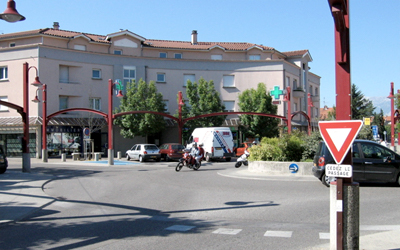
Figure 9: a new village centre around a traffic circle
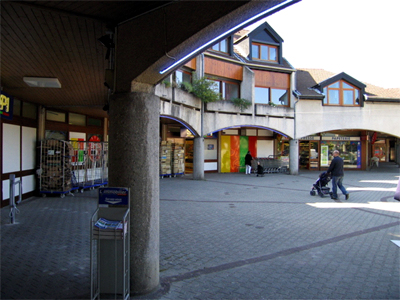
Figure 10: another view of the new village centre of Poisat. There is a supermarket on the left and apartments above
Finally, I would like to show how road engineering has been used to create space for people and businesses. Figure 9 shows the new village centre of Poisat. Buildings are constructed around a traffic circle, with parking in front, businesses on the ground floor and apartments above. This is a good example of integrated development and moderate densification that doesn't feel oppressive.
What impressed me most about Poisat was how much a small municipality can accomplish with limited resources in just a few years. As soon as one enters Poisat it is clear that this is a place where the needs of pedestrians, cyclists and motorists are respected equally.
The quality of the street engineering, with the clear signage and attractive perennial plantings, also sends a message about the residents: they care about where they live. It's also a very inviting and attractive place to walk or cycle.
In this article I've shown what a city much like Hamilton is doing to re-balance its transportation network. Grenoble is making changes on both the large scale (by building a modern streetcar network) and on the small scale (by re-engineering its streets). One question I haven't answered is why Grenoble has been able to do so much so quickly.
Although I don't really know the answer, I suspect it comes down to political will and public support. Local politicians made these changes a priority and expended the financial and political capital to make it happen. In short, they showed leadership.
In France cities also receive significant financial and technical support from the national government. In fact, the Concours Cavaillé launched the modern age of streetcars in France in 1975. This was a letter written by the Minister of Transport to the mayors of eight French cities encouraging them to submit proposals for a modern streetcar system.
The government had realized that simply expanding freeways and roads (the policy up until then) would not meet future transportation needs. They also wanted to save costs by deciding on a standard design for the streetcars and rails.
Interestingly, Nantes showed initiative by winning the contest despite being left off the list of cities invited to participate! Hamilton and other Canadian cities would certainly benefit from this sort of help and leadership from the provincial and federal governments.
Another thing I learned from living in France is that the French are not afraid of big innovative engineering projects (think of the TGV, Airbus, or the Channel tunnel), and will push through ambitious plans to improve their cities. Hamilton should be inspired to show some of the same ambition, and we should push our own politicians to realize the potential of our city.
As I mentioned in my first article, Hamiltonians often talk about how much they enjoy spending time in Europe. Unfortunately, we don't usually think critically about what we liked and why. If we did, we might realize that we could have a European quality of urban life here as well. If Grenoble (a city of 500,000) can do it, so can Hamilton (a city of 500,000)!
By jason (registered) | Posted January 10, 2007 at 10:17:29
wow. great piece. Hamilton could certainly learn from these cities. And we should start at Gore Park/south leg of King. Our city is still small and compact enough (the lower city that is) to really create livable, walkable neighbourhoods. Rapid transit to the far end of the Mountain and other suburbs would also help lessen the number of single occupancy cars coming into the city each day (pick a Mountain access some morning and count how many cars have more than 1 person...hardly any). Local streetcar routes could be brought back, starting with areas in need of redevelopment.... think of a line commencing at Park and Robinson, north on James to King William over to Ferguson and back Rebecca to James, up to Duke street and back over to Park. Future extensions could go up to Barton Street and the General Hospital and west to Locke and Dundurn Streets.
By schmadrian (registered) | Posted January 10, 2007 at 11:25:07
Great article, Nicholas!
You must be logged in to comment.
There are no upcoming events right now.
Why not post one?